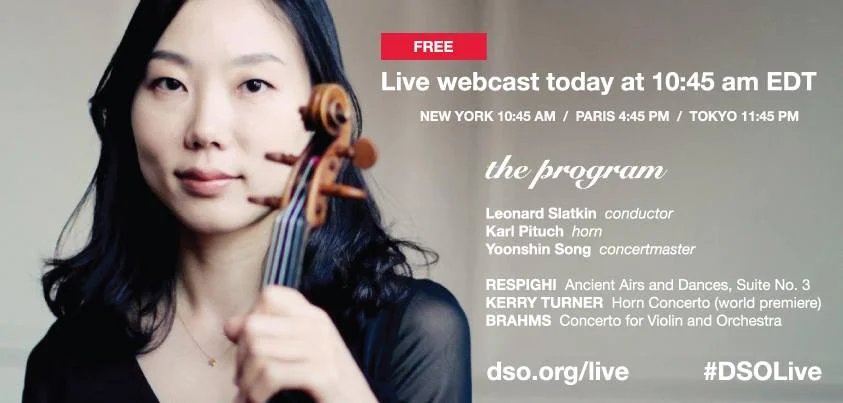In 2012, Dog & Pony DC, a small theatre company in Washington D.C., encouraged audiences to direct the plot of a show and influence characters using Twitter. In A Killing Game, audiences and actors stood side-by-side, immersing themselves in a collaborative artistic experience. In order to learn more about the company’s decision to utilize social media, and its approach to integrating the technology and management of its uses, AMT Lab’s Kristen Sorek West spoke to company director, Rachel Grossman.
To Tweet Seat or Not To Tweet Seat: An Insider's Perspective
The year has come full circle for me and tweet seats. From my first conversation about them last summer at the Theatre Communications Group Annual Conference to the CMU School of Music’s tweet seat initiative this past spring, the last twelve months provided an opportunity to play with this still new (and at times, controversial) audience engagement tool.
Viewpoint of Billions
Wearable technology is all anyone is interested in talking about these days, and certainly AMT Lab is no different (for example, see Performing Arts in the Wearable Age). I’d like to take a brief interlude from gossiping about when Apple’s smart watch is going to drop to refocus on an “older” wearable technology: Google Glass.
Let me preface this by saying I am not an Explorer (or a Glasshole–whichever floats your boat) but as a casual observer of technology, I’ll jump at the chance to try something new. Like Google Glass. So when the National Portrait Gallery offered me (and the rest of DC) the chance to do just that, you bet I went for it.
Brave New World: Symphony Orchestras & Online Experiences
Just what is an online audience? How does it differ from an offline audience? How does participating in the arts through electronic media and online channels relate to the attendance of arts events? Moreover, exactly what (and how) are symphony orchestras using these digital technologies to engage with individuals around the world?
Technology and Social Media in Crowdsourced Exhibition
In recent years, crowdsourcing has become an increasingly familiar concept implemented by multiple arts organizations to develop and engage audiences. Examples include “Click! A Crowd sourced Exhibition” (Brooklyn Museum, 2008), “Soapbox!” (Museum of Photographic Art, 2013), “Boston Loves Impressionism” (Museum of Fine Art Boston, 2014), and “People Choice”(Gibbes Museum of Art).
CMU School of Music Tries Tweet Seats
On January 26, 2014, Carnegie Mellon University’s School of Music offered a little something extra to its audience both in Pittsburgh and afar: tweet seats. Last summer I wrote an article about tweet seats that provides an overview of decisions that need to be made before implementing this heavily debated audience engagement technique. With this advice in mind, the School of Music set out to define how and why tweet seats might be a good idea for live concerts.
Research Update #3: Creating Online Audiences For Orchestras
In my last research update, I illustrated some of the most important opportunities and benefits associated with the creation of online audiences. But as arts managers consider how to create these online audiences, they should also be aware of a variety of challenges and potential risks associated with doing so. Here are a few:
Attracting New Crowds
An ongoing concern of performing arts managers is the impact of arts participation and engagement programs on creating new audiences. Specifically, arts organizations are concerned as to whether or not their efforts elicit new patrons to attend performances regularly. Concerns exist in particular about the overall impact of engagement programs like simulcasts, wondering if a new audience members are attending these events at all, or if the events are drawing the same group of people that come to staged performances. Furthermore, a growing discomfort exists that opera simulcasts might actually be “cannibalizing sales,” or in other words, reducing ticket sales at live opera performances.
A Virtual Orchestra
The Australian Chamber Orchestra (ACO) has teamed up with Sydney digital media company Mod Productions to produce a new interactive “virtual orchestra” that is breaking down audience barriers in the music world. The resulting audio-visual installation, “ACO Virtual,” has created the means to bring the Orchestra outside the concert hall and into spaces where the ACO may not perform.
Research Update #2: Creating Online Audiences for Orchestras
Last month, I introduced the Berlin Philharmonics’ Digital Concert Hall as a best-practice example of creating online audiences by a symphony orchestra. Indeed, we can find orchestras worldwide reaching out for audiences beyond the walls of a traditional concert hall. So let us inspect three of these orchestras—the Detroit Symphony Orchestra, the Sydney Symphony Orchestra, and the Philharmonia Orchestra (UK)—and have a closer look at some of the tools they use, how these tools are being implemented, and the resulting opportunities they create.















